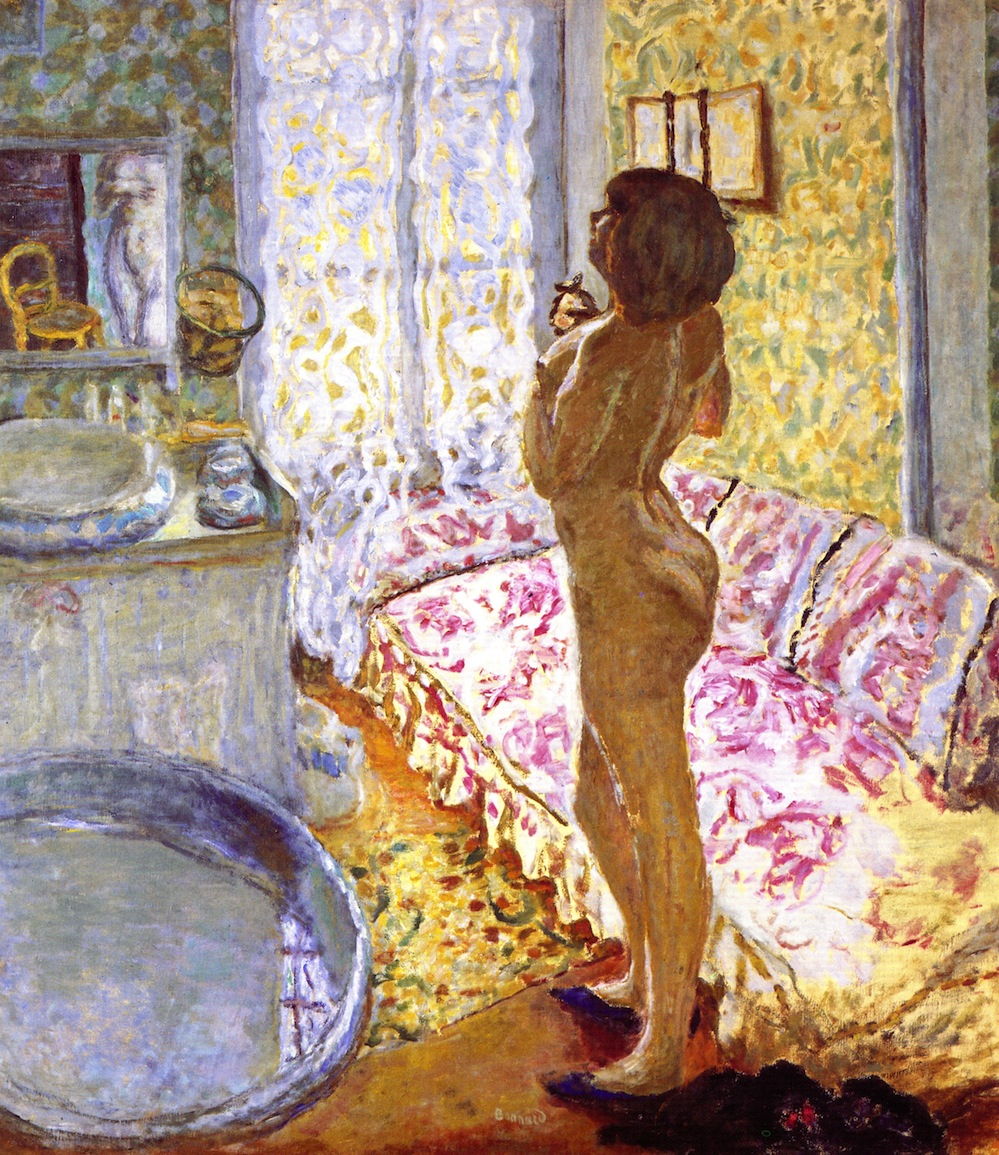In February 1908, Pierre Bonnard and Marthe travelled to Tunisia and Algeria, following which he visited London with Vuillard. Then in August, he stayed at Quiberon, which is on a peninsula on the southern coast of Brittany, in the north of the Bay of Biscay.
I am profoundly puzzled, though, over his trip to North Africa. The most exotic and different area that he had ever been to, it has been visited by many painters who have returned with superb sketches and paintings made during their stay. I have searched online and in books, and have been unable to identify a single surviving painting which he made during his visit, or of any local motif painted afterwards. If you know of any, I would be delighted to hear of them.
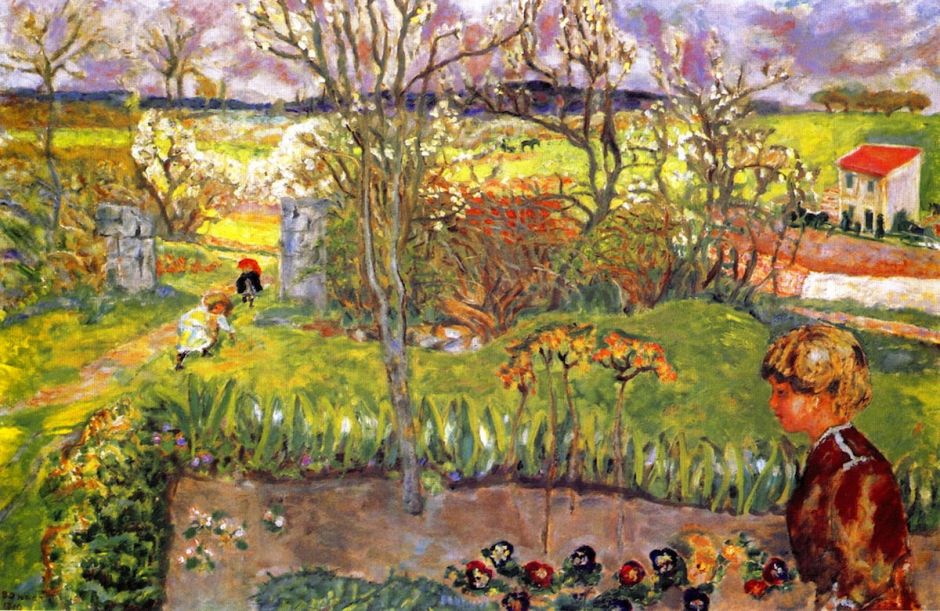
Following his return to France, Bonnard painted Early Spring (1908), which shows children, possibly from the Terrasse family, enjoying their garden as it comes into bloom in the better weather. Although this image is very high in chroma, I suspect from the appearance of the woman’s face that this may be exaggerated from the original painting.
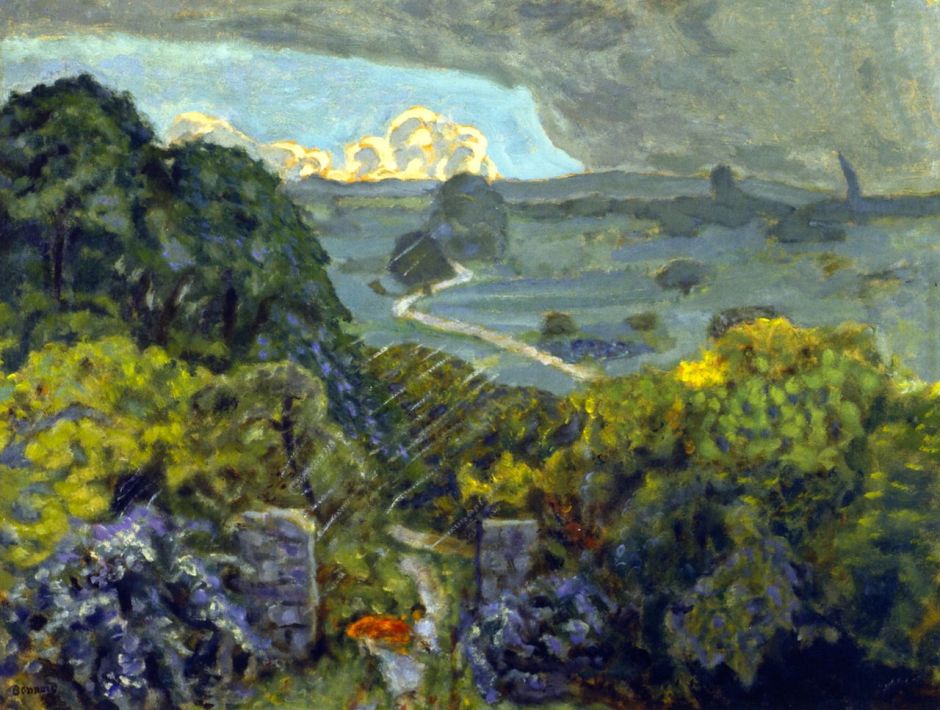
Thunderstorm at Vernouillet is an atmospheric landscape which he may have painted in 1908, although my bibliographic information suggests that he didn’t visit this area until the following year. Vernouillet is on the southern bank of the river Seine, midway between the centre of Paris and Monet’s property at Giverny.
This was the first painting that Bonnard sold to Arthur Hahnloser and his wife, a sale helped by Vallotton. The Hahnlosers became steadfast friends, supporters, and patrons.
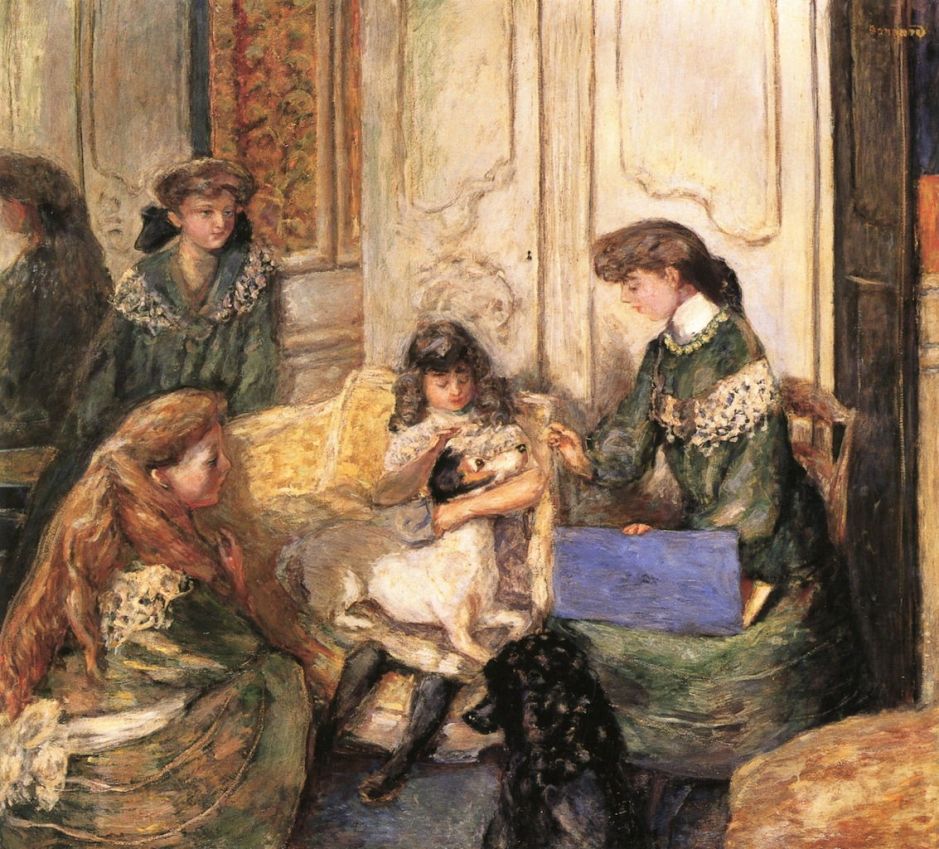
Young Girls and Dogs, also known as The Natanson Girls, (1908) shows four young girls from the Natanson family. Thadée Natanson had two brothers, Alexandre and Louis-Alfred, and the girls shown here may have been their daughters; I can find no record of Thadée and Misia having any children of their own, and by this time Misia had divorced Thadée and married Alfred Edwards, the press magnate. Between them, the girls are petting a smaller dog, while a larger black dog sits watching patiently.
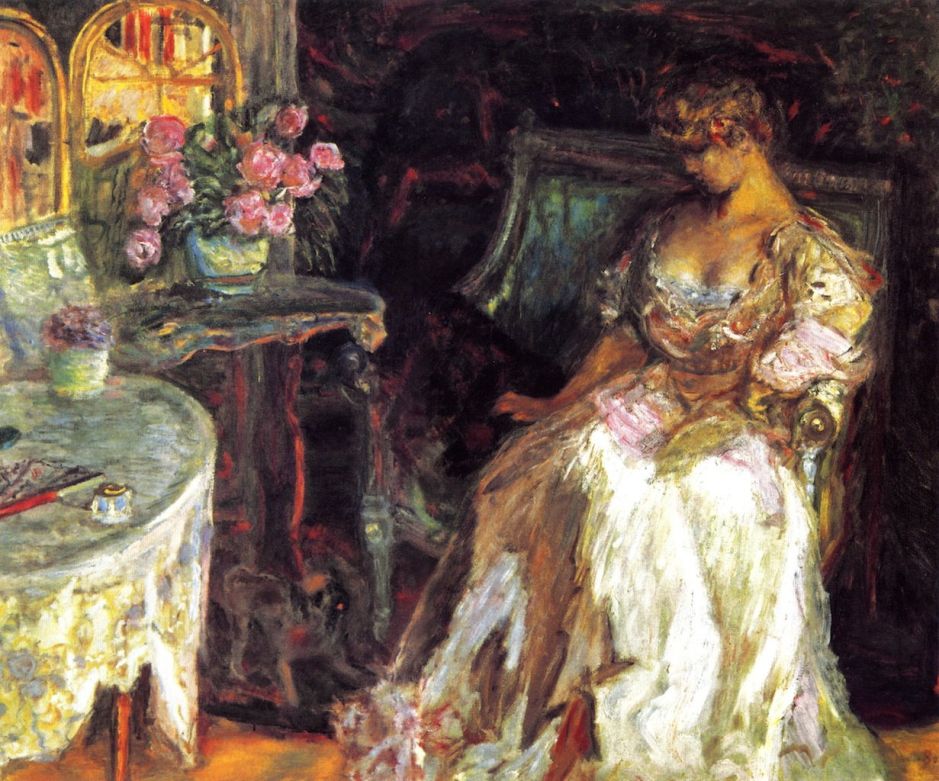
This was also the year in which Bonnard painted several portraits of his muse and patron Misia, including this of Misia with Roses (1908), in which she sits more distantly in the opulent surroundings in which she lived with her second husband.

Bonnard had occasionally painted laid-out tables as a form of still life. In 1908 these became more frequent, as in this Breakfast under the Arbour (1908).
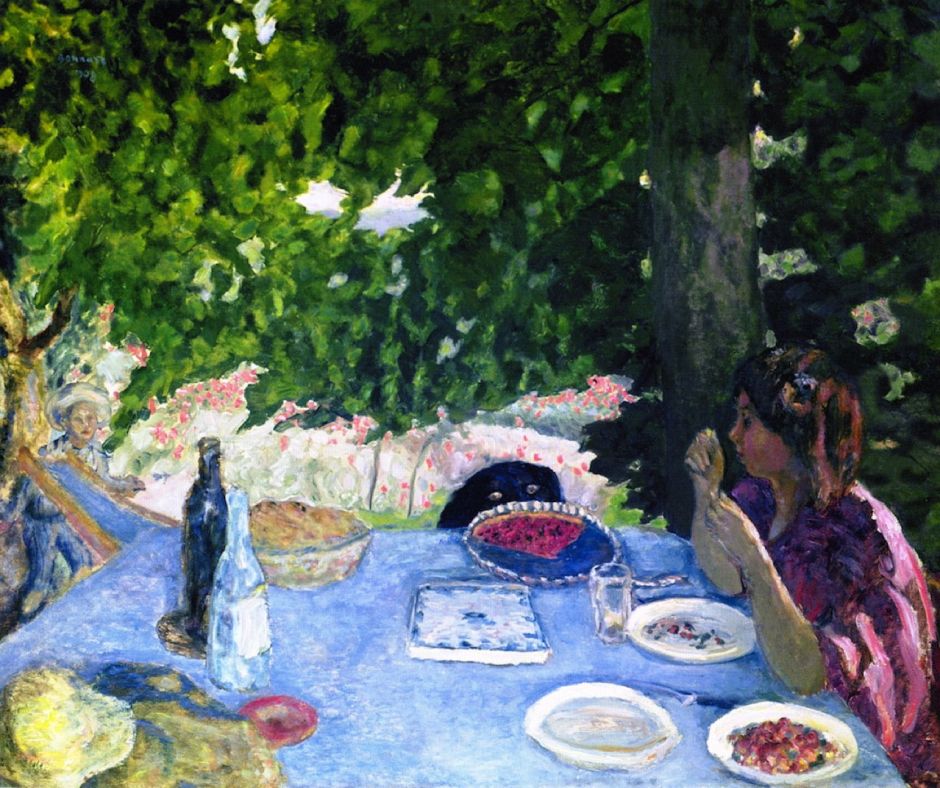
In Bonnard’s The Cherry Tart (c 1908), he has extended the still life to include two participants at the table, and a delightful touch of humour. At the far right is, I believe, Marthe, and at the far left a young boy. In the middle of the painting is Marthe’s dog Black, his eyes peering longingly at an uneaten segment of cherry tart.
I wonder how many slices of cherry tart the dog ate by the time that Bonnard had finished this painting.

Bonnard continued to paint figures from models. Nude Seated on a Red Sofa (1908) engages in mirror-play, but without the sophisticated compositions of previous years.

His intimate visual diary of Marthe’s life was becoming the focus of his development and innovation. In El Tocador, which means The Dressing Table (1908), Marthe’s headless torso is seen only in reflection. The direct view is of the large bowl and pitcher which she used to wash herself.

Mirror in the Dressing Room (1908) shows a similar dressing table and mirror, but in contrasting blue decor. A woman’s nude back and buttocks now appear in the mirror, as another young woman sits at the left drinking a cup of coffee.
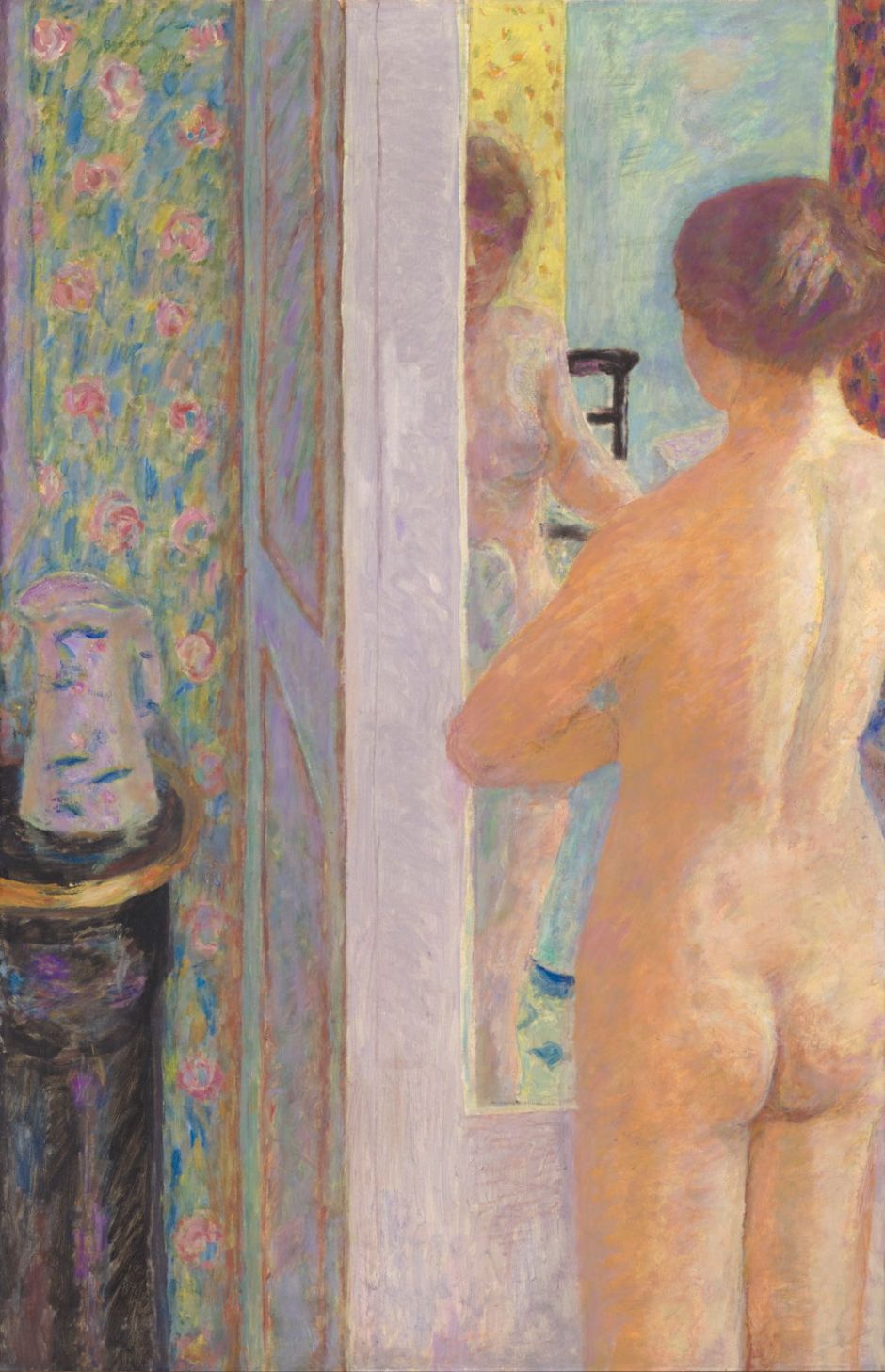
In The Toilet, alias The Toilet in Pink, from about 1908, a nude woman stands drying herself in front of a vertical mirror. This painting sets the trend for these intimate domestic scenes to be lighter.
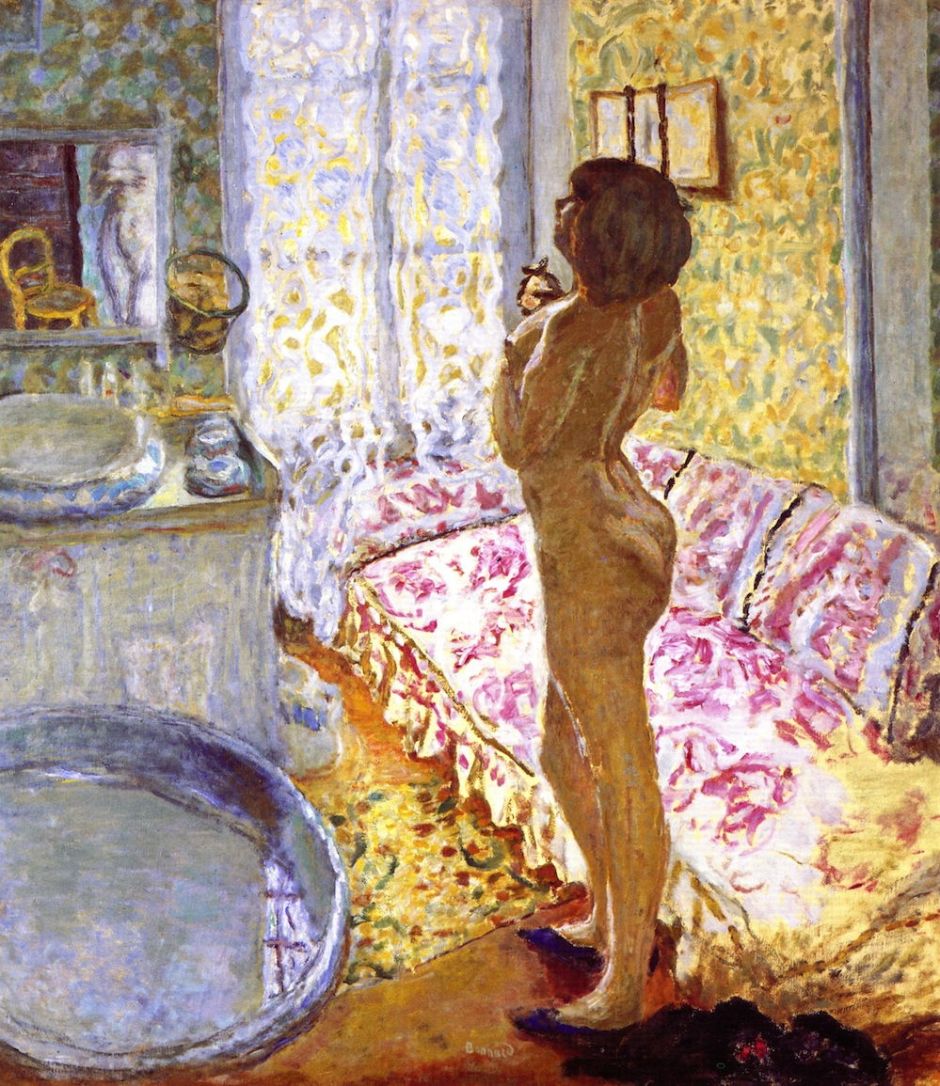
Of all these works which Bonnard painted in 1908, my favourite is The Bathroom, or The Dressing Room with Pink Sofa, which anticipates those from later in his career, painted when Bonnard was living in the south of France. Looking at a brightly-lit window from a slightly elevated position, Marthe’s body is seen against that light, and the bright colours of the room.
There is still some subtle mirror-play, with her headless torso shown in the dressing table mirror, in which the artist is replaced by an empty chair. Its last reflection is that of the window frame in the residual water in the shallow metal bath at the left.
In 1909, Bonnard visited Vernouillet and Médan (which are adjacent). In the early summer, he stayed in Saint Tropez, with the Fauve painter Henri Manguin (1874-1949), where Bonnard was dazzled by the light and colours of the Midi.
He also met and established a close friendship with the critic Georges Besson (1882-1971), who became an enthusiastic collector of Bonnard’s work. At the end of the year, Bonnard and Vuillard made their first visit to Claude Monet in his house and garden at Giverny.
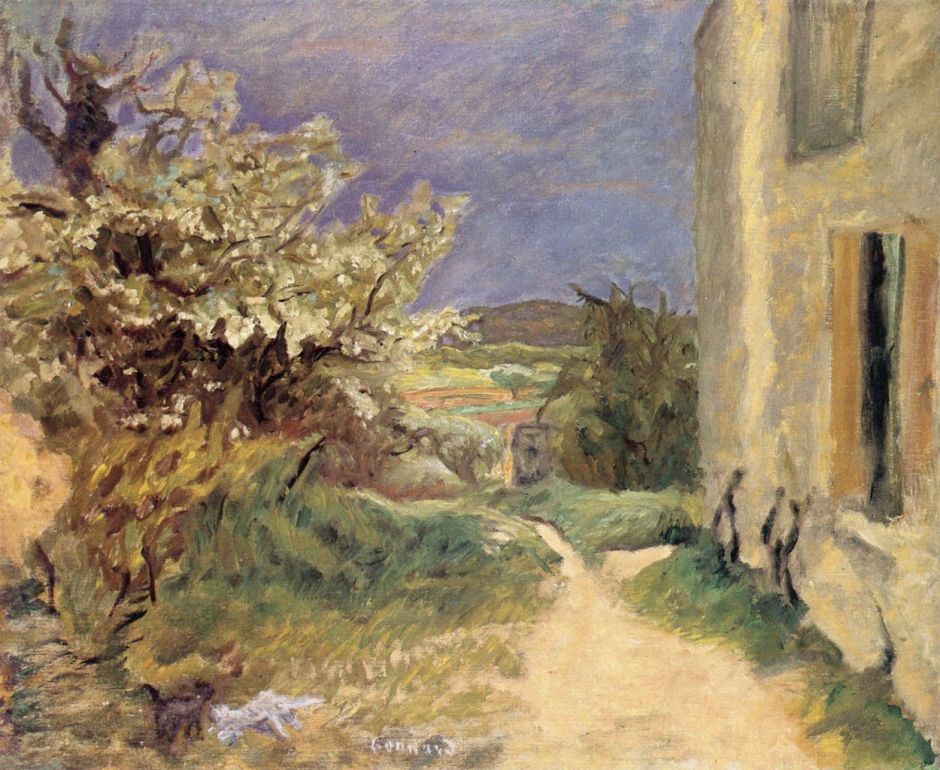
The Small House, Spring Evening is an unusual landscape which Bonnard painted in 1909. It offsets the rich blossom on the trees at the left against the plain wall of a house, seen in the failing light.
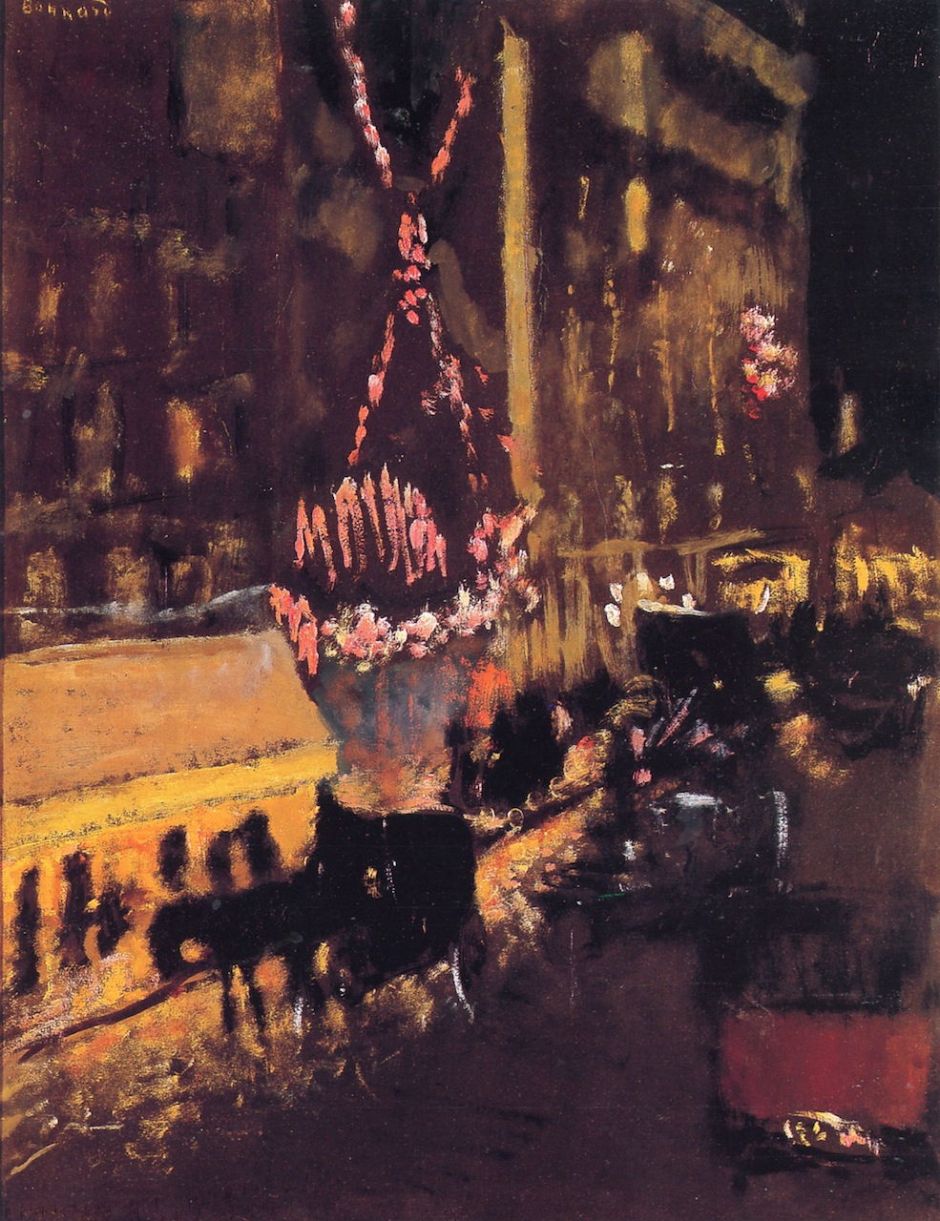
Bonnard continued to paint cityscape nocturnes of Paris, such as The Effect of Night, the Moulin Rouge, which is also known as Leaving the Moulin Rouge (1909). The road has the interesting, and transient, combination of horse-drawn cabs and early motor cars, shown at the bottom right.

Among his intimate domestic scenes, Reflection or The Tub (1909) is one of his best pieces of mirror-play. He again opts for the view from an elevated position, looking down and into an angled plane mirror in the bathroom. The reflected view almost fills his canvas, with the nude Marthe (I think) crouching slightly in the upper left corner, as she dries herself after a bath.
The angle of view plays some odd tricks. The washing bowl on the dressing table is brought to overlie the larger shallow bathtub on the floor, for example. Some of the objects on the dressing table are shown directly, others only in the reflected image. And over on the opposite side of the room is a chair, and a coffee tray.
From 1909, Bonnard started to spend more and more of his time in the south of France. Early the following year, he was also to be commissioned to paint a vast triptych, probably his largest work.
References
Guy Cogeval and Isabelle Cahn (2016) Pierre Bonnard, Painting Arcadia, Prestel. ISBN 978 3 791 35524 5.
Gilles Genty and Pierrette Vernon (2006) Bonnard Inédits, Éditions Cercle d’Art (in French). ISBN 978 2 702 20707 9.

